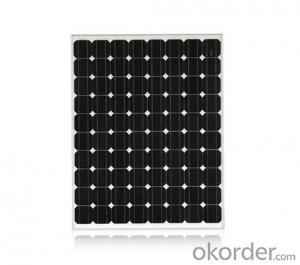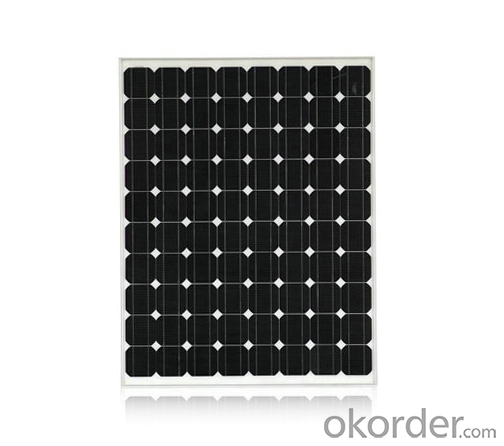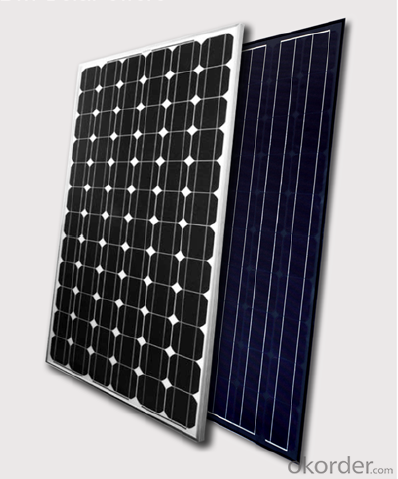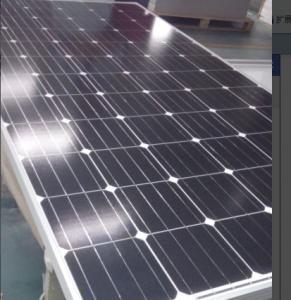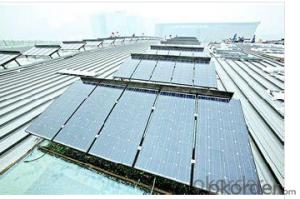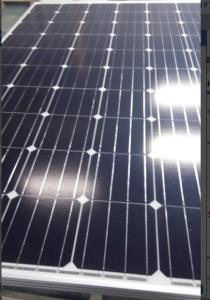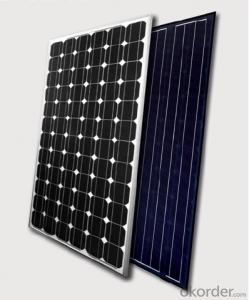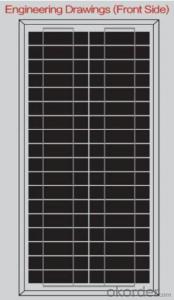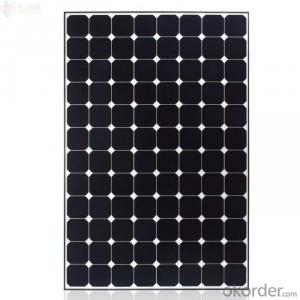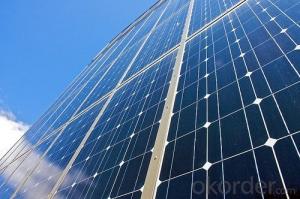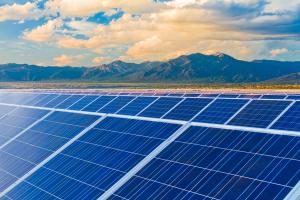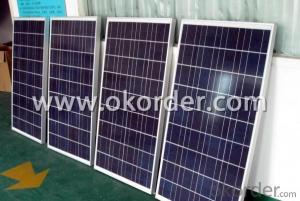Best Brand Solar Panels - 305W CNBM Solar Monocrystalline Series V (295W—305W)
- Loading Port:
- China main port
- Payment Terms:
- TT OR LC
- Min Order Qty:
- 10000 watt
- Supply Capability:
- 500000 watt/month
OKorder Service Pledge
OKorder Financial Service
You Might Also Like
Specification
CNBM Solar Monocrystalline Series V (280W—290W)
Characteristics
| Max Power Voltage Vmp(V) | 34.7 | 35 | 35.5 | |
| Max Power Current Imp(A) | 8.51 | 8.58 | 8.65 | |
| Open Circuit Voltage Voc(V) | 41 | 41.3 | 41.7 | |
| Short Circuit Current Isc(A) | 9.25 | 9.3 | 9.35 | |
| Max Power Pm(W) | 295 | 300 | 305 | |
Temperature Coefficient of Cells
| NOCT | 45℃±2℃ | |||
| Temperature Coefficients of Isc (%/℃) | - 0.039 | |||
| Temperature Coefficients of Voc (%/℃) | –0.31 | |||
| Temperature Coefficients of Pmp (%/℃) | –0.42 | |||
Mechanical Data
| Dimension | 1954 x 982 x 45 mm | |||
| Weight | 27.5kg | |||
| No. of Cells and Connections | 72 (6 x 12) | |||
| Tolerance | –0.42 | |||
| Cell Monocrystalline Cell | 156 x 156 mm | |||
| Packing | 528 Pcs/40ft(H) Container | |||
Limits
| Operating Temperature | –40 °C to +85°C | |||
| Storage Temperature | –40 °C to +85°C | |||
| Max System Voltage | 1000VDC(IEC) / 600VDC(UL) | |||
IV Curve
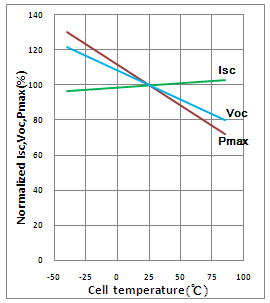
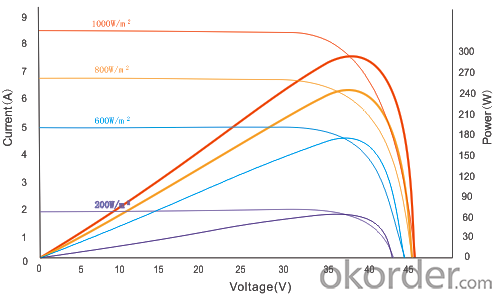
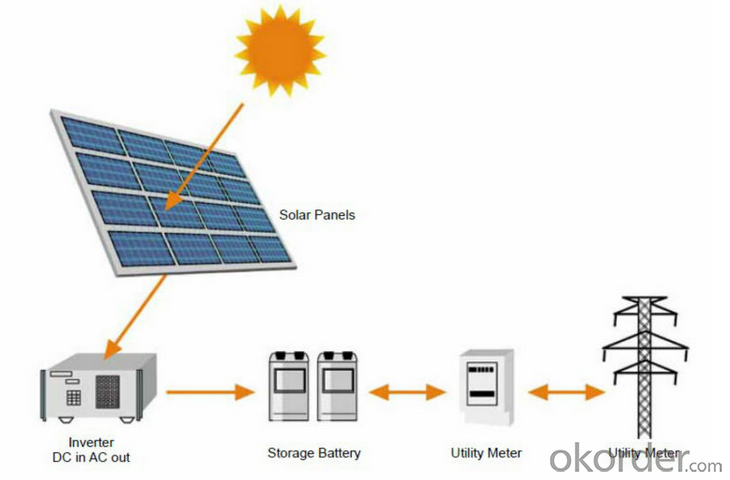
Image
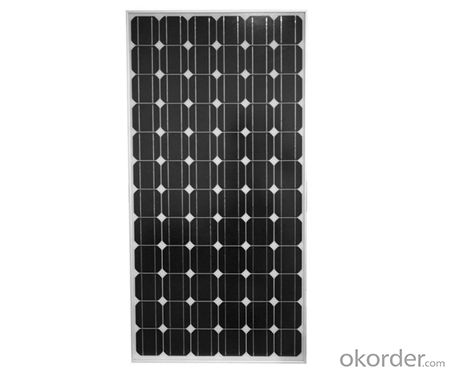
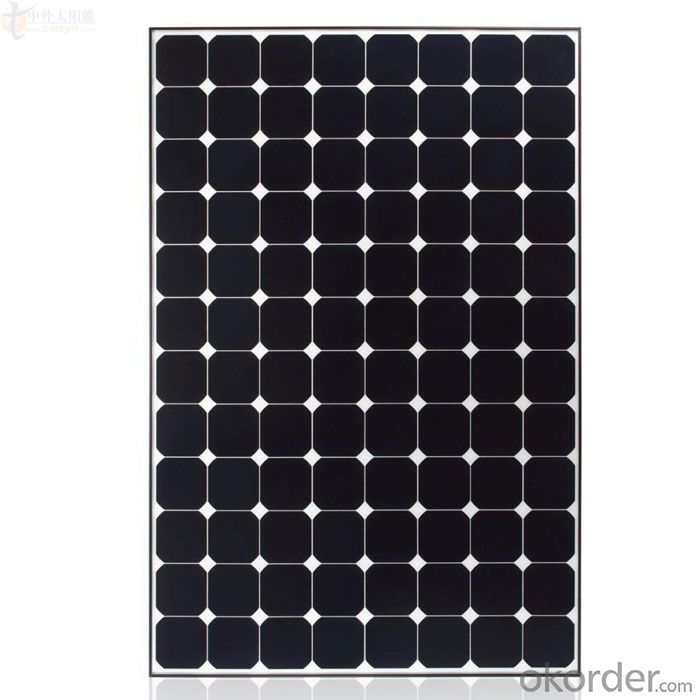
Guarantees
Products Guarantee 12 yrs free from defects in materials and workmanship
Performance Guarantee No less than 90% within 10yrs and no less than 80% within 25yrs
Certificates TUV (IEC61215&IEC61730), VDE(IEC61215&IEC61730), UL, CE
FAQ
1. Q: Do you have your own factory?
A: Yes, we have. Our factory located in Jiangsu province.
2. Q: How can I visit your factory?
A: Before you take off from your country, please let us know. We will show you the way, or arrange time to pick you up if possible.
3. Q: Do you provide free sample?
A: Usually we do not offer free sample
4. Q: Could you print our company LOGO on the nameplate and package?
A: Yes, we can do that.
- Q: Can solar panels be installed on vehicles?
- Yes, solar panels can be installed on vehicles. Many electric vehicles and some hybrid vehicles come equipped with solar panels to help charge their batteries. Additionally, solar panels can be installed on the roofs of various types of vehicles, such as RVs, boats, and campers, to generate electricity for powering onboard appliances and systems.
- Q: I know that there is a life expectancy for solar panels, and I suppose, the technology involved. Any information?
- Great okorder
- Q: Is it possible to store energy from solar panels for night?
- Solar Power At Night
- Q: I need a solar panel for my laptop as i am going camping in the desert, and i need my laptop. There are two choices of solar panels, One is 0 watts and 2 V and maximum power current 0.56 amps. The other one is 2 watts, 2 V and no mention of current. My laptop plug says input 00-240V and .5A and then output 5V-5A. Which one should i get for my laptop. If there are other choices please tell me ill look them up on OKorder.Thanks
- I'm afraid neither of these panels will do much for charging or running your laptop. If the power brick is supposed to emit 5 volts at 5 amps, that's 75 watts. Neither of those panels provides enough voltage and the power output is obviously far too small. The capabilities of solar power are vastly overestimated for small panels. Sunlight is limited to about kilowatt per square meter under ideal conditions (summer time, clear blue sky, for a few hours around noon in the US southwest). But consumer panels top out at about 5% efficiency, so your limit is 50 watts per square meter - in other words you would need about half a square meter, or about six square feet, of panel to provide 75 watts. And even under ideal conditions you will only get that much for a few hours each day. Also, the panel's voltage output is not regulated, so even if you find a panel that emits 5 volts (this would actually have to be made up of groups of 30 cells in series, as they emit half a volt each at most) you can't just connect the panel output into your laptop's DC in. You'd need a regulated DC-to-DC supply, and since that is not 00% efficient it will cost a bit of the power... now you need even more panel area. All in all, not really a practical thing to carry along on a camping trip.
- Q: Do solar panels require a battery?
- No, solar panels do not require a battery. They generate electricity directly from sunlight and can feed the excess energy back into the grid. However, a battery can be used to store the excess energy for later use when the sun isn't shining.
- Q: I need to know how solar photovoltaic panels work. Anyone have a good explanation?
- Hey E Girl, photovoltiac panels are pretty simple. They start with a solid block of silicone, and shave thin layers off of them, called wafers. Once you have about 72 of them, you take half of them and dope them with boron, then the other half are doped with phosphorous. Once that's done, they take one each phosphorous and boron wafer, and glue them together with a special conductive epoxy glue, and attach a wire to each wafer. When the two glued wafers are exposed to the sun, a reaction occurs that forces free electrons from the silicone particles from one wafer onto the other, and a voltage is generated between them, about /2 volt to be exact. Once all 36 pairs are glued together, they are wired in series, connecting the phosphourous wafer from one to the boron wafer on the next, and so on. If you start with 72 wafers, you'll have 36 pairs glued together when you are done. At /2 volt each, that makes a 8 volt panel, which is used to charge a 2 volt battery. The charging source always has to have a few more volts than the battery. These 36 pairs of cells are then arranged on some kind of back board, glued down, covered with acrylic glass and mounted in a frame. There are some great websites you can go to for more info, I will list some below. Did you know that there are over 00,000 homes and businesses in the US alone that use some level of solar power to operate their electrical systems? That's good news. We actually live in one of those homes, it is powered by both the wind and sun and heated with solar and wood. I hope this answers your question, good luck, and take care, Rudydoo
- Q: I am looking to wire in some solar panels into my home. I already have plenty of wiring, and some solar panels around. I just need to know what I need to do to wire them into my home so I can lower my electric bill. This past month it was six hundred dollars.Can someone direct me to some information, or tell me how without telling me to hire some guy to come out to charge me thirty thousand dollars to install two or three thousand dollars worth of equipment?
- I am all for do-it yourselfers, I am one, but... Sorry to tell you, but connecting solar panels to grid power will require an electrician. There are many requirements for special disconnects to prevent harm to the utillity company workers that must be considered. You will also have to have an inverter sized to match your panels. The simple answer is to connect your panels to something specific, without connecting it into your house wiring. An example is to connect your water well pump to solar power and disconnect it from the grid. But you will still need an inverter and will need to calculate the power demands of the pump and the amount of power available from your panels, which varies by your longitude and latitude. It sound like a simple thing to do, but without special training and experience you will be sorry if you try this yourself.
- Q: How much space is required for installing solar panels?
- The amount of space required for installing solar panels depends on various factors such as the type and size of the panels, the energy needs of the property, and the efficiency of the panels. Generally, for residential installations, it is recommended to have around 100-400 square feet of roof space per kilowatt of solar panels. However, ground-mounted systems may require larger areas depending on the number of panels and their tilt angles. It is advisable to consult with a solar installer or expert to determine the exact space requirements for a specific project.
- Q: How do solar panels affect my electricity bill?
- Solar panels can significantly reduce your electricity bill by producing clean and renewable energy from the sun. By generating your own electricity, you can offset the amount of power you need to purchase from the grid, resulting in lower monthly bills. Additionally, if your solar panels generate more electricity than you consume, you may even receive credits or payments from your utility company.
- Q: Hey was looking at a 5 watt 2 volt solar panel and was wondering if it'd be enough to power a regular light bulb. Also need to power a 5volt 6.5 amp pump for at most a minute at a time. So basically if I had this panel would I be able to plug a lamp into it and have it light for 5+ hours at a time with the possibility of running the pump? If not what size panel would I need?
- NO ! Pump needs 747 watts power. And you need to buy one more expensive DC to AC converter to make it work. Use solar panel at least has 000W output.
Send your message to us
Best Brand Solar Panels - 305W CNBM Solar Monocrystalline Series V (295W—305W)
- Loading Port:
- China main port
- Payment Terms:
- TT OR LC
- Min Order Qty:
- 10000 watt
- Supply Capability:
- 500000 watt/month
OKorder Service Pledge
OKorder Financial Service
Similar products
Hot products
Hot Searches
Related keywords
